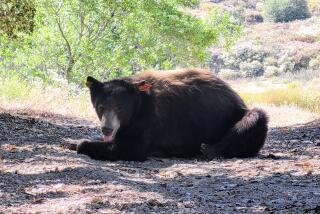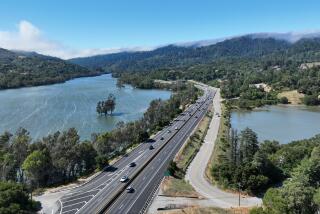SHARING THE ROAD WITH TRUCKERS
Motorists are responsible for hundreds of truck accidents in California.
As a statistical fact, the California Highway Patrol reports that during a 21-month period from January, 1983, to September, 1984, there were 53,404 truck-involved accidents in California.
While 49% of them were blamed on truckers, investigating officers determined that the remaining 51% were caused by motorists, pedestrians, animals, objects and so forth.
Charles Ramorino, chairman of the California Trucking Assn., says part of the problem is public ignorance about heavy trucks.
In cooperation with the state Department of Motor Vehicles, the association is attempting to better educate the public about sharing the road with big rigs. A brochure, prepared by the association and distributed by the DMV, lists five characteristics of trucks and offers safety tips on how to deal with them:
Heavy trucks need more room to stop. Depending on weather and road conditions, a tractor-trailer traveling 60 m.p.h. may require 400 feet to stop.
Safety tip: Avoid pulling in front of a fast-moving truck. Don’t pull in front of a big rig and suddenly slow down. Signal well ahead of time if you plan to change lanes in front of a truck, then allow maneuvering room.
Trucks are not able to accelerate or maneuver quickly. Even driven by an expert, a large tractor-trailer is not as maneuverable as a passenger car.
Tip: Don’t create a hazard for a truck driver and then expect his rig to react the way a car would.
Trucks must stay in the two right-hand lanes. California restricts trucks to the two right lanes on three and four-lane highways. Generally, trucks travel in the far right lane and use the second lane to pass.
Tip: If you use the second lane “stay with the flow of traffic.” Driving slower than the pace creates a bottleneck for trucks and prevents them from passing even slower vehicles in the far right lane. If a truck behind you wants to pass, move over when it is safe, then return to the lane after the truck passes.
Big rigs have “blind spots.” Drivers of heavy trucks have difficulty seeing motorists running in “blind spots” caused by a rig’s size and the way it’s built. One problem area is near the right front wheel and the other is within 30 feet of the rear of the trailer.
Tip: Don’t tailgate. Pass on the left or drop back if you don’t wish to pass. Don’t pass a truck on the right unless it’s unavoidable, then use caution. Don’t cruise alongside a big rig “just to stay out of the sun.”
Big trucks must occasionally make wide right turns. On the way to pickup and delivery points on city streets, tractor-trailers must sometimes move to the left first, then turn right.
Tip: Don’t pass a truck on the right unless it’s absolutely necessary, and then only if you’re sure the truck is not going to turn right.
The trucking association recognizes that “not all truck drivers want to share the California’s highways.” For those who don’t, the association urges motorists to report unsafe and discourteous truck drivers by filling out a report form available through the DMV and sending it to the association’s West Sacramento headquarters.
More to Read
Sign up for Essential California
The most important California stories and recommendations in your inbox every morning.
You may occasionally receive promotional content from the Los Angeles Times.










